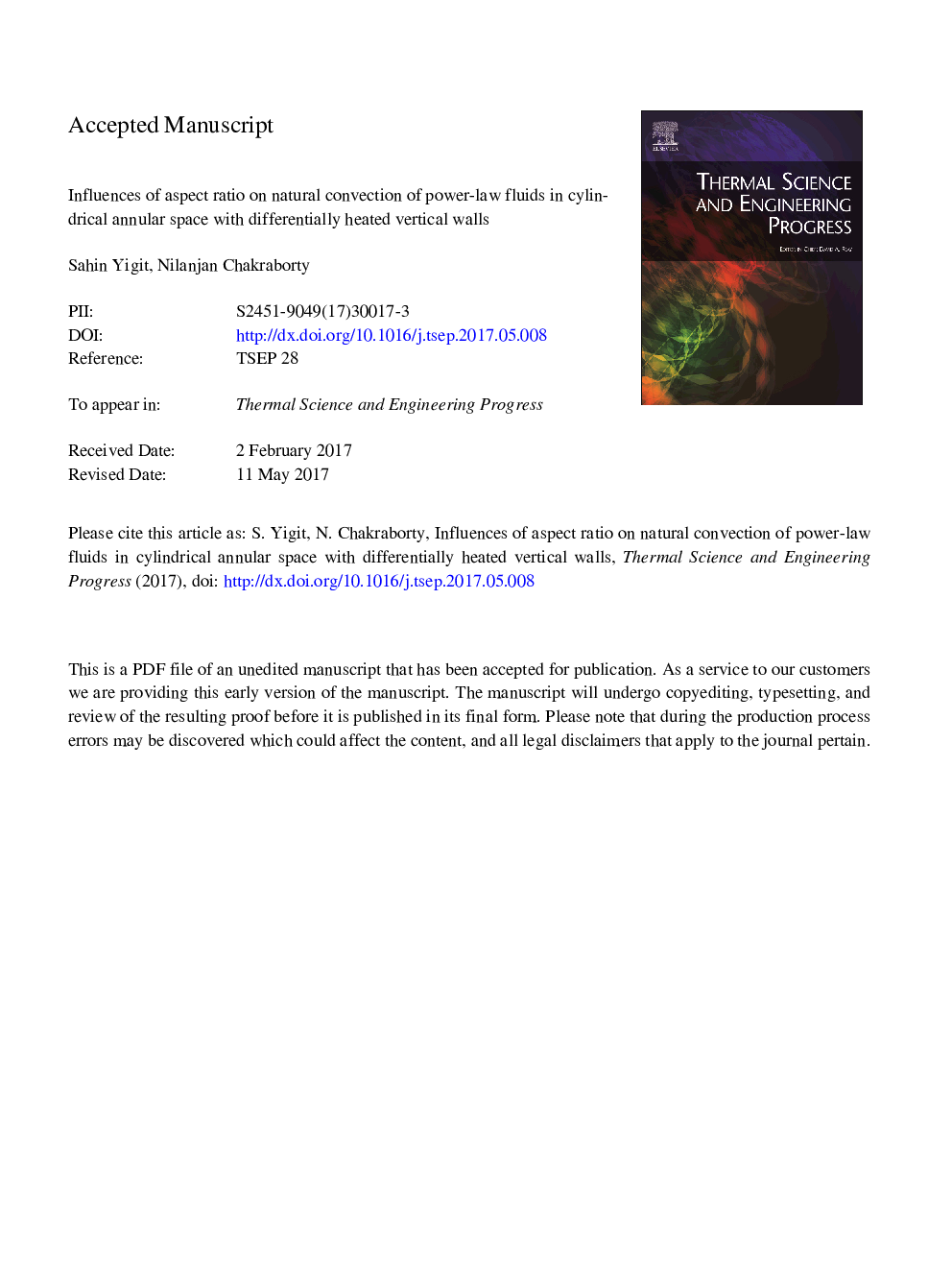| Article ID | Journal | Published Year | Pages | File Type |
|---|---|---|---|---|
| 8918913 | Thermal Science and Engineering Progress | 2017 | 29 Pages |
Abstract
Natural convection of power-law fluids in cylindrical annular spaces has not been analysed in detail in spite of its industrial importance in food and chemical processing, solar collectors and cooling of electronics. Therefore, laminar natural convection of power-law fluids in rectangular cross-sectional cylindrical annular spaces with differentially heated vertical walls subjected to the both constant wall temperature (CWT), and constant wall heat flux (CWHF) boundary conditions has been investigated in this study. Two-dimensional axisymmetric steady-state numerical simulations have been conducted for a range of values of normalized internal radius 0.125⩽ri/L⩽16 (where ri internal cylinder radius, L is the difference between outer and inner cylinder radius), aspect ratio 0.125⩽AR⩽8 (AR=H/L, where H is the enclosure height), power-law index (i.e. 0.6⩽n⩽1.8) and nominal Rayleigh number (i.e. Ra=103-106) for a single value of nominal Prandtl number: Pr=103. It is found that the mean Nusselt number based on the inner periphery of the annular space Nuâ¾i increases with an increase in Ra due to the strengthening of buoyancy forces. By contrast, Nuâ¾i increases with a decrease in n due to the weakening of viscous resistance. The mean Nusselt number Nuâ¾i decreases with an increase in ri/L before approaching the mean Nusselt number for a rectangular enclosure in the limit of ri/Lââ. By contrast Nuâ¾i normalized by the corresponding Nusselt number for pure conduction (i.e. Nuâ¾i/Nucond) increases with an increase in ri/L. The contribution of convection to overall thermal transport strength increases with an increase in ri/L, since the Nusselt number for pure conductive transport Nucond decreases with an increase in ri/L for cylindrical annular spaces. Additionally, it has been found that Nuâ¾i exhibits a non-monotonic variation with an increase in AR for same set of values of Ra,Pr,ri/L for shear thinning (n<1), Newtonian (n=1) and shear thickening (n>1) fluids in the CWT configuration, while Nuâ¾i increases monotonically with an increase in AR in the CWHF configuration irrespective of the value of n. The completion between the strengthening of thermal convection and the weakening of conductive thermal transport with an increase in AR is responsible for the non-monotonic AR dependence of Nuâ¾i in the CWT boundary condition. A scaling analysis is utilised to explain the influences of normalized radius, aspect ratio, nominal Rayleigh and Prandtl numbers, power-law index on Nuâ¾i for natural convection of power-law fluids within rectangular cross-sectional cylindrical annular spaces. Finally, new correlations have been proposed for Nuâ¾i for both CWT and CWHF boundary conditions, which have been shown to provide satisfactorily predictions of Nuâ¾i for the range of the parameters considered in this analysis.
Related Topics
Physical Sciences and Engineering
Energy
Energy Engineering and Power Technology
Authors
Sahin Yigit, Nilanjan Chakraborty,
